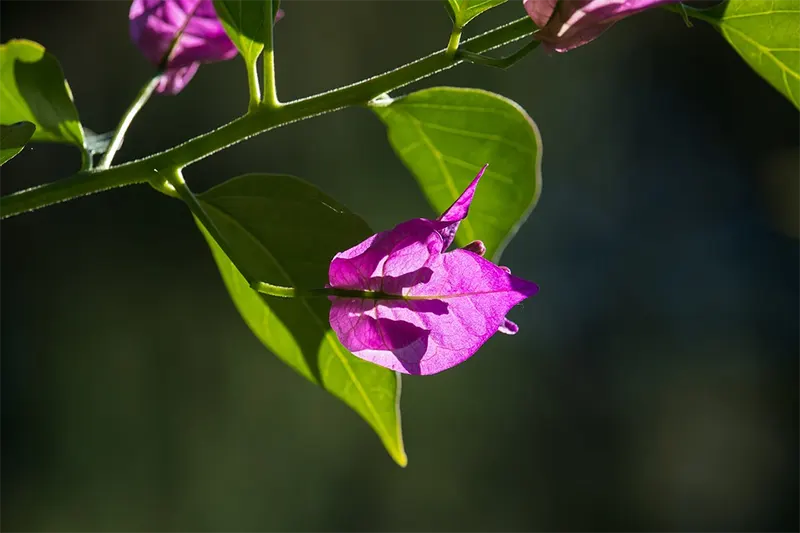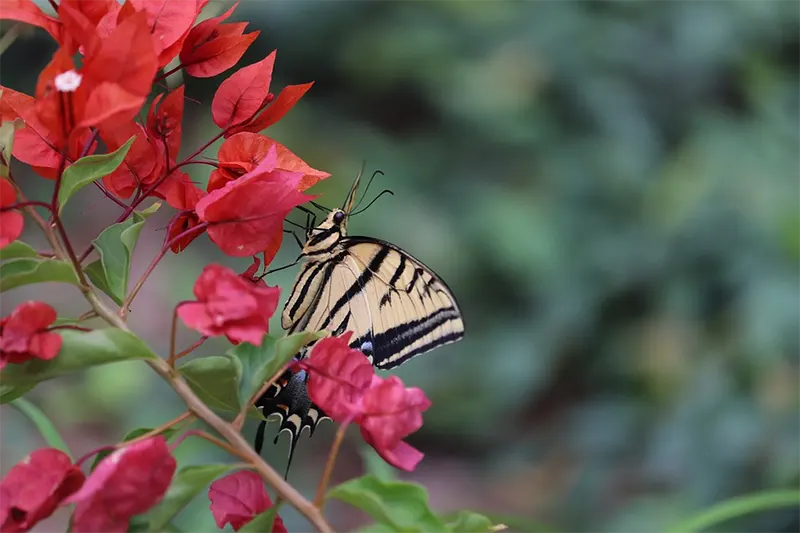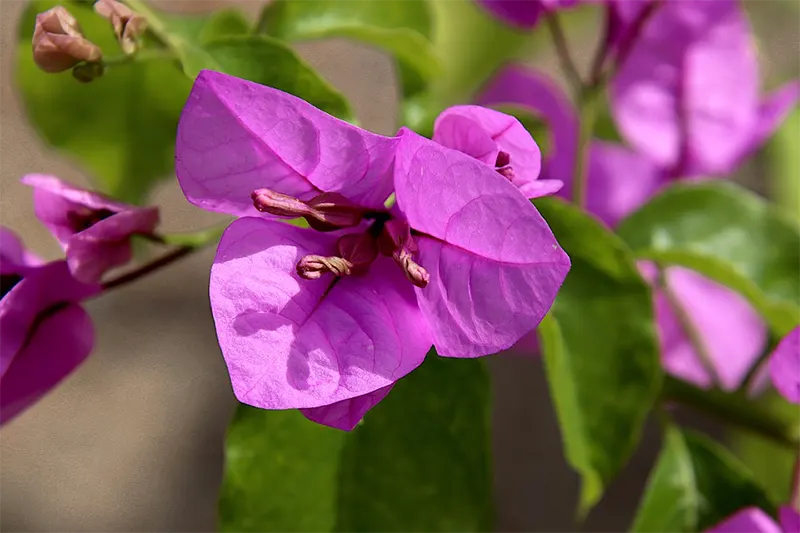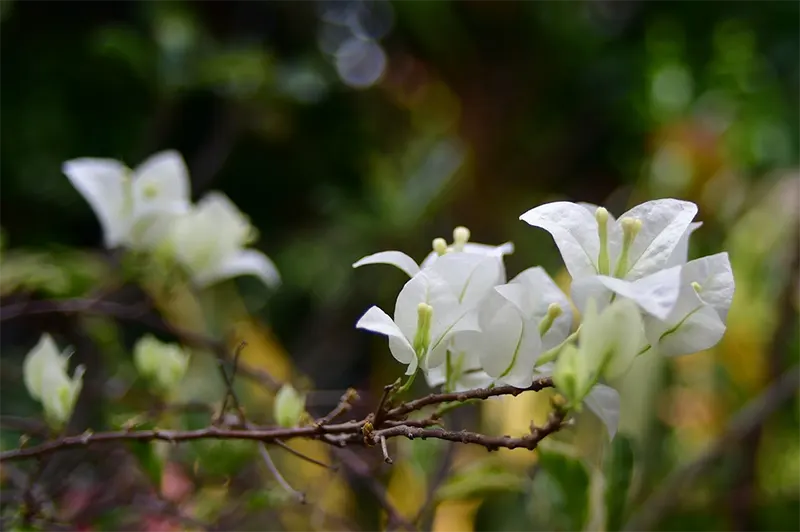Bougainvillea Glabra Bonsai Care Sheet
The Bougainvillea glabra is one of the four widely recognized species in the genus to grow as a bonsai. While it generally follows the same patterns as the others in the small group, there are a few differences you need to pay attention to.
So, if you have the B.glabra as a bonsai, stay tuned as we share the specific details of how to care for it.
Here are the topics we’ll cover for the Bougainvillea glabra:
Here are the topics we’ll cover for the Bougainvillea glabra:
01
02
03
04
05
06
07
08
Quick Bougainvillea Glabra Bonsai Care Sheet
Before we head into the specifics, here’s a TL:DR of B.glabra bonsai care. You can quickly see any vital information you need, but we recommend you read the rest of our guide too. We’ll break down all the essential details.
Recommended soil
Provide acidic, loamy soil high in nitrogen
Watering
Drown the soil once a week, and only light water when the soil dries out
Potting season
Spring
Shaping and pruning season
Maintenance pruning in spring, design pruning in winter
Light
Full sun for up to six hours a day
Fertilizing
Spring and Autumn, high in nitrogen
Propagation methods
Branch and root cuttings, air layering
Pests and diseases
Caterpillars, scale, greenfly, aphids, chlorosis, fungal diseases
Growth patterns
Vigorous in spring and again in autumn, blooms in summer
Recommended styles
Informal and formal upright, slanted, broom, multiple trunks, cascading, semi-cascading, and exposed root
Native Area
South America
Scientific Classification
- Clade: Eudicots
- Order: Caryophyllales
- Family: Nyctaginaceae
- Genus: Bougainvillea
- Species: Glabra

How to Care for a Bougainvillea Glabra Bonsai
It’s time to deal with the heart of our Bougainvillea glabra care guide. While you can apply most of these factors with most of the genus trees, we’ll make sure to keep it as close to the species as possible. In that way, you’ll be able to develop a healthy bonsai with no hiccups.
Best Soil
The paperflower bonsai enjoys loamy soil, and it doesn’t do too well with clay types that hold the water for too long or cactus substrate that drains too quickly. It’s essential that there’s enough acidity; otherwise, it will struggle to absorb the macronutrients it needs to develop the flowers and leaves.
Watering
The Bougainville glabra doesn’t like being watered on a daily basis. Instead, you should place the container in a tub filled with water over the soil. Leave it there for about half an hour. When you remove it, let all the liquid drain out, leaving some moisture behind in the substrate. Wait about a week before you do it again, with light watering if you see the soil drying out quickly.
Repotting
While the B.glabra is evergreen, you should only repot it in early spring when you see new buds forming. Be careful not to prune the roots too much, as it may kill your bonsai tree. Prepare the new soil rich with food, and make sure the acidity levels are correct. As soon as you have transplanted it, smother the soil with water to make sure it has moisture for the week ahead.
Shaping and Pruning
The best way to encourage gorgeous shapes and encourage flowers to bloom is via constant pruning in spring and summer. Every branch will give you a flower, so it’s best to grow as many of them as possible. When a flower dies, cut the branch back to see new growth appear. Thanks to its evergreen nature, you’ll need to prune again in winter.
Location and Sunlight
The Bougainville glabra does best outside with full sun for up to six hours in the day. When the afternoon is at its peak, you’ll want to ensure there’s shade so the light and heat don’t burn the foliage. It can tolerate the heat, but you’ll need to bring it inside for winter when the frost arrives while still providing direct light.
Fertilizing
When it comes to feeding, you need to do everything in your power to improve the acidity levels first. Alkaline soil makes it hard for Bougainville glabra to absorb the necessary nutrients, such as potassium and phosphorous for the flowers and branches. You may also need to increase nitrogen levels in spring when the leaves start growing again.
Propagation Methods
You can quickly propagate Bougainville glabra with 6 to 12-inch cuttings. Place it in soil that has bottom warmth to assist the roots in forming. It’s also best to add rooting hormone powder, as it will make them develop faster. Other methods you can use include root cuttings and air layering, which have mild levels of success depending on the conditions.
Pests and Diseases
There are many pests that enjoy feasting on this species. Your most significant problem lies with the Looper Caterpillar, which enjoys eating the leaves and destroying bonsai trees. Watch out for fungal diseases, such as leaf spots and root rot. Other critters you need to keep an eye out for include scale, greenfly, and aphids.
Growth Patterns
Any Bougainvillea is known for how quickly they develop leaves and branches. B.glabra grows mainly in spring and summer, but you may also see some new leaves if your winter is warmer than usual. The bracts and flowers put on a gorgeous display in summer.
Recommended Styles
There are many styles you can try with the Bougainvillea glabra bonsai. The most popular ones are informal upright, formal upright and broom, exposed root, semi-cascading, and cascading. Forest landscapes aren’t recommended due to how dense the foliage becomes, spreading vertically.
You can read our article on Bougainvillea tree shaping for more details.
How to Identify the Bougainvillea Glabra Species
As the various species are closely related and look very similar, it may be hard to tell the Bougainvillea glabra apart from the others. We decided to put a small section together to give you an idea of what it looks like, hoping that it will help you identify it.
Size
Where B. spectabilis, rosenka, and peruviana grow quite large in the wild, the Lesser Paperflower doesn’t. For example, B. spectabilis can easily reach 40 ft., whereas Bougainvillea glabra only grows to about 12 ft. It’s for this reason that many people prefer this species to develop into a bonsai.
Leaves
There are ovate green leaves that may also appear ovate-lanceolate in some instances. They are usually pointed at the ends, while the upper surface is smooth while the underside has a few hairs (B. spectabilis doesn’t have hair under the leaves). You’ll find modified leaves of different colors called bracts that enclose the flowers, usually in groups of three.
Trunk, Branches, and Bark
The structure of the tree has several thorns, while the branches droop and have few hairs. The word ‘glabra’ means bald, and that’s where it earned its name from.
Flowers
The white or yellow flowers hide in the bracts, and there are six to eight stamens. They appear as clusters with long tubes, which allow insects with a proboscis or birds with long, narrow tongues to feed on the nectar. Animals that usually feed and help with pollination include butterflies, moths, and hummingbirds.
Seeds
When you succeed in pollinating your Bougainvillea glabra, you’ll notice the bracts around the flowers start to wilt. Seed pods will form with one seed each, with fine hairs holding them in place. As soon as it’s ripe, you can remove the seed and attempt to germinate it, but you’ll have more success with propagating a cutting.
Common Issues When Caring for a Bougainvillea Glabra Bonsai
While we’ve shown you how to care for the B.glabra, we wanted to highlight some specific concerns many botanists and bonsai enthusiasts complain about when growing their trees. If you have any of these problems, we’ll indicate how you can solve them.
- Leaf spots: This is a fungal disease where the spores cause black or tan spots to form, which can grow into blotches. You can read our detailed guide on how to treat them.
- Yellow or dying leaves: This is a sign of stress, and you’ll need to work out what could be the cause. Possible reasons could be insufficient light, water, or nutrients. You’ll also need to see if any pests are eating the leaves, branches, or roots.
- Root rot: While the Bougainvillea glabra enjoys bathing in water once a week, it’s drought-resistant and doesn’t like daily watering. Too much moisture can quickly lead to root rot, so you should let it dry out a bit.

Interesting Facts About Bougainvillea Glabra Bonsai
A sweet way to end our guide is by sharing some exciting facts you may not know about the Bougainvillea glabra. Surprisingly, people tend to share more about the genus as the species, but we hunted far and wide for this information. We hope you find it interesting.
- The species has various cultivars with different colors, such as Magnifica Pink and Snow White
- It’s the most popular Bougainvillea to grow as a bonsai
- It’s known as the Lesser Paperflower, with spectabilis called the Greater Paperflower due to how large it grows
- While it’s native to South America, Bougainvillea glabra has found its way into the United States as one of the top ornamental species
Final Thoughts
Well, there you have it. If you have a Bougainvillea glabra bonsai, you now have all the information you need to take care of it. If there’s something specific you need to know, please drop us an email, and we’ll get back to you as soon as possible or update this care guide.
FAQ About Bougainvillea Glabra Bonsai
People have asked a few questions about this species, which we may have already answered in this article. If you’re after any of these specifically, we’ll provide a quick solution to save you time. Should you have any more questions not solved by anyone as yet, please let us know. We may have responded to the query on our Brainly or Quora profiles.
The main way you can identify Bougainvillea glabra is by the size and the leaves. It grows smaller than the other species, while the underside has a few hairs on it compared to a smooth touch. You can also ask your local bonsai or plant expert to help you check which one it is.
While Bougainvillea usually grows about 36 inches per year in the wild, you can expect Bougainvillea glabra to develop at a slower rate. You’ll only see about 12 – 15 inches per year unless it has a sudden spurt of growth due to nutrients. As a bonsai, the rate will depend on how much you prune it.
While the sap of the tree is mildly toxic, the leaves and bracts of the Bougainvillea glabra have been used as natural remedies in the past. By infusing them and taking the mixture orally, it has been known to with gastrointestinal issues, such as stomach aches and diarrhea. It also helps with respiratory problems, like asthma, chest pain, bronchitis, and fevers.
There are plenty of ways you need to care for Bougainvillea glabra. It needs plenty of sunlight for every season, as it’s evergreen in nature. If you see leaves changing color or falling, you should check for pests or diseases. It also needs the right fertilizer and nutrients if you want to see stunning flowers in summer.







